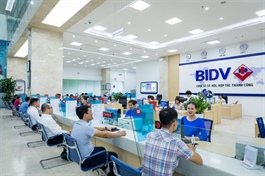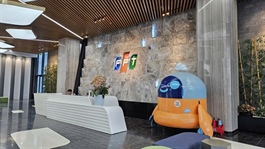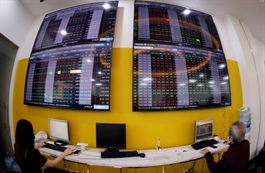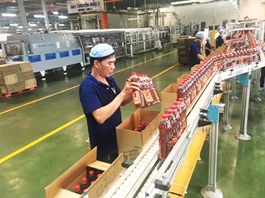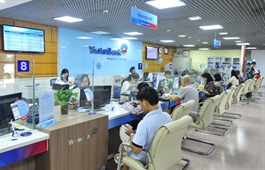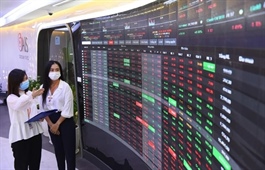Investment opportunities seen in Việt Nam's power stocks
Investment opportunities seen in Việt Nam's power stocks
As Việt Nam’s economy rebounds with ambitious growth targets, the power sector is poised for significant expansion to meet increasing energy demands.

The Government's focus on achieving a GDP growth rate of at least 8 per cent in 2025 underscores the critical role of electricity in sustaining industrial and economic activities.
The Ministry of Industry and Trade has outlined three scenarios for electricity supply in 2025.
Under the baseline scenario, electricity growth must reach 11–12 per cent, with dry-season months requiring growth of at least 13 per cent. In the high-growth scenario, electricity demand is projected to increase by 12–13 per cent, with dry-season months needing growth of 14 per cent or more. The extreme scenario anticipates growth of 14–15 per cent, with dry-season months requiring an increase of at least 16 per cent.
This surge is driven by industrial production, increased foreign direct investment and accelerated public investment.
To address this demand, the power sector is accelerating the expansion of power generation capacity.
While 2024 saw the commissioning of projects like the Vân Phong 1 BOT Thermal Power Plant and the Ialy Hydropower Plant expansion, 2025 will focus on advancing large-scale projects such as the Nhơn Trạch 3 and 4 LNG power plants (1,624 MW), Vũng Áng II Thermal Power Plant (1,330 MW) and Quảng Trạch I Thermal Power Plant (1,403 MW).
Concurrently, significant investments are planned for the transmission grid, with an estimated US$134.7 billion required between 2021 and 2030, and up to $523.1 billion for the 2031-50 period, according to the National Power Development Plan VIII.
Investment opportunities
As of early 2025, Việt Nam’s total installed power capacity reached approximately 87,879.5MW, marking a 9 per cent increase from the end of 2023, data from National Power System and Market Operator Co,. Ltd (NSMO) showed.
The energy mix comprises 33.6 per cent coal-fired power, 27.9 per cent hydropower, 10.7 per cent gas and oil-fired power, 7 per cent wind power and 19.2 per cent solar power.
Despite the growing share of renewables, coal-fired power remains the dominant source, expected to play a central role in meeting electricity demand in 2025.
Vietcombank Securities Co,. Ltd (VCBS) projects that peak load (Pmax) could reach 54.3GW nationwide, with the northern region accounting for 28.2GW.
This substantial demand may strain supply, particularly during peak periods, highlighting the importance of reliable power generation sources.
Investors may find attractive opportunities in power companies with strong operational performance and strategic positioning.
Companies like PetroVietnam Power Corporation (PV Power), with its diversified portfolio including gas-fired and coal-fired plants, and the Refrigeration Electrical Engineering Corporation (REE), with investments in both traditional and renewable energy projects, are well-placed to benefit from the sector's growth, said An Bình Securities.
PC1 Group JSC is also on the watch list of the securities firm. It is a leading enterprise in the country’s power construction sector, thriving in a context where power infrastructure is receiving significant attention and investments due to its critical importance.
The company is also the developer of numerous hydropower and wind power projects.
Meanwhile, Quảng Ninh Thermal Power JSC has proactively implemented stable, continuous and efficient preparations for 2025, particularly for the dry season
It developed plans early on, including procuring spare parts and equipment, scheduling maintenance and repairs for machinery and generator units as early as August 2024.
While the outlook for Việt Nam’s power sector is promising, investors should be mindful of potential challenges.
Delays in project implementation, regulatory changes and fluctuations in fuel prices can impact the profitability of power companies. Additionally, the transition towards cleaner energy sources, while necessary, requires substantial capital investment and may face operational hurdles.







